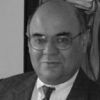Fourth wave': Terror takes on a new form

Travelling in the US a couple of years ago, we drove up the scenically splendid Pacific Coastal Highway of California. Inevitably, memories were stirred of my very first trip to the US, when as a young man I had also travelled up this road. The US at that time was a land where educated youth were radically questioning the racism and neo-imperialism of their country. Rebellion, even revolution, were in the air. Martin Luther King, Benjamin Spock, Tom Hayden, and others were leading massive demonstrations in Washington. The revolutionary anthems of troubadour Bob Dylan were being sung everywhere.
A visit to Hearst Castle, the magnificent and somewhat tasteless mansion of millionaire publisher William Randolph Hearst, reminded us of the darker side of the uprisings of the 1960s/70s. Hearst’s granddaughter Patricia was first kidnapped by, and then became an active member of, a band of violent terrorists called the Symbionese Liberation Army.
Another, larger terrorist organisation at the time was the Weather Underground, that carried out bombings and other attacks across the US during their infamous ‘Days of Rage’. There were also the Black Panther Party and, outside America, the Baader-Meinhof Gang in Germany, the Red Army in Japan, PLFP in Palestine, Red Brigades in Italy, and others elsewhere. All these groups espoused pseudo-Marxist ideologies.
Facing a different kind of terror today brings up the question of whether there is some kind of historical continuum between those Leftist terrorists of the 1960s/1970s and today’s Islamist gangs. Eminent Californian scholar David Rapoport believes there is.
Rapoport says there have been four successive manifestations, or “waves”, of modern terrorism. The first of these was the anarchist wave in late 19th-century America and Europe, especially in Russia. Rapoport’s second wave comprised the nationalist/anti-colonial terror groups that operated in Asia, Africa, and elsewhere between the 1920s and 1960s. The third wave was the 1960s-70s leftist groups discussed here. And the fourth wave is that of the faux Islamist gangs of today. When it comes to the present wave, there are certain peculiarities that distinguish this from the earlier waves and these Rapoport fails to explain.
The first distinction is ideological. Previous waves were all, however spuriously and superficially, linked with progressive political movements. However conspiratorial and violent these groups may have been, they can be seen as storm crows riding the winds of wider political or social liberation movements. But the fourth-wave terrorists of today, such as the Taliban, the militant Islamic State group, and the various Lashkars and Jaishes, propose no liberating ideologies. The second distinction is one of intention. The present-day terrorist is indifferent as to whom or how many he kills. Cold-blooded lack of discrimination in target selection demonstrates that today’s terrorist is entirely uninterested in gaining political sympathy or support from among the people. Thirdly, and this is especially significant, is the geographic extent of present-day terrorism’s area of operation, and the wildfire way it has spread outwards from the Pak-Afghan border areas, through the Middle East, down to West Africa, and up into Europe. All these exceptional features are explicable only if we appreciate that, unlike Rapoport’s first three waves, this fourth wave is not spontaneous or autonomous. It has been driven by powerful state entities which made common cause with reactionary elements in Pakistan, Afghanistan, Iraq, and Syria, in order to recruit, indoctrinate, organise, and unleash these dangerous warriors. With this kind of large-scale loss of these countries’ necessary monopoly of violence, state collapse and anarchy have become the order of the day.
By arrangement with Dawn

